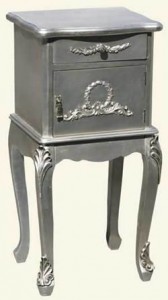5 Frugal Tips For Owning Quality Furniture
Most of us tend to overspend on furniture, and in most cases end up regretting because it doesn’t last as long as it should. We’ve all heard (or experienced) horror stories where someone buys a fantastic looking table/bed/sofa, and within a year, they have to replace it because it’s broken or no longer works.
As Team Frugality, we want to spend as little as is practically possible on furniture, and still get good value. Always remember that frugality isn’t about being cheap or buying bad quality stuff, it’s about getting value for the money you spend (and of course paying as little as you can for the good stuff).
The furniture market offers a wide range of options when it comes to furnishing your house. You can choose to buy ready made items from the stores, have a carpenter make your furniture, or a mix of the two, where you get a furniture shop to customise your furniture. How do you ensure you’re getting value for money?
1. Educate Thyself: Frugal people are always armed with information.Before going out into the market, research as much as possible on the types of wood, how to differentiate good furniture from bad, and the pitfalls to look out for. Of course the internet is your friend when it comes to information. This article breaks down the technical aspects of wood types pretty well, and I was also surprised that I didn’t know the difference between hardwood and soft wood:
“I used to think hardwoods were hard and softwoods were soft. Silly me! Actually, hardwood just means ‘from a deciduous tree’ and softwood means ‘from a coniferous tree’, and some hardwoods (like aspen) are softer than some softwoods. What you want on exposed surfaces is a wood that’s reasonably scratch-resistant. You can test this easily enough by attempting to draw a thin line with your fingernail across the wood; if it makes a visible dent (use a flashlight here if necessary) you know it won’t stand up to much use.
Structurally, any kind of solid wood or sturdy plywood will do the trick. If plywood, look for at least nine layers. Check the wood for knots, even on unexposed pieces; all knots are susceptible to cracks. Some woods, like pine, are ‘knottier’ than others, and therefore less desirable. Avoid particleboard, pressed wood, or fiberboard.“
2. Consider DIY for simple pieces: Sometimes you find that we overly rely on stores and carpenters for our furnishing, but it’s reasonably easy to learn how to make or restore furniture pieces ourselves. I love reading Addicted To Decorating blog, she does amazing work with her two bare hands. Someday, I hope to buy the equipment and do a few pieces myself. Always start with the simple pieces so you don’t get discouraged though; picture frames for example.
3. Independently hire shop carpenters: Most furniture shops are very secretive in revealing who their carpenters are, but you can always use good sleuthing skills to find them. For example, if you’ve ordered custom made furniture at the office, the carpenters are likely to deliver and assemble it. Use this opportunity to get their contacts, and contract them independently to make your furniture for you. Cutting out the middleman could save you as much as 50% from the listed price of the item.
4. Source for the materials yourself: When you decide to go the carpenter route it helps to ask the carpenter to list what will be required, then you source for the materials together, or by yourself. This will ensure that you don’t pay more than you should, and that the quality of wood, upholstery, and other materials is as high as you desire.
5. Deals! Deals! Deals! Most furniture shops have once a year Sale, to clear old stock just before they bring in new stock. Take advantage of this to buy good quality furniture for cheap.
Final word, store bought doesn’t always mean great quality, always be careful to check for the quality of wood used, the upholstery and joinery work, and don’t forget to fill in the warranty card!




1 Comment